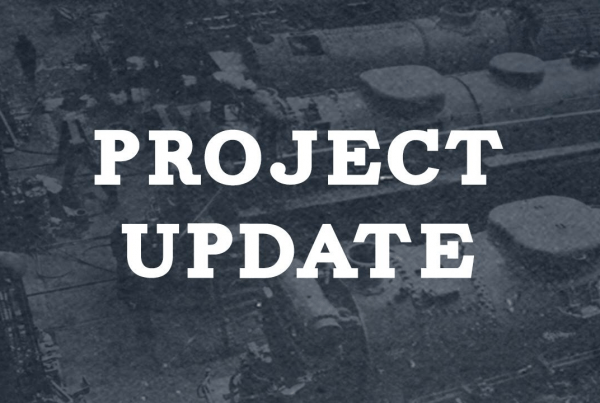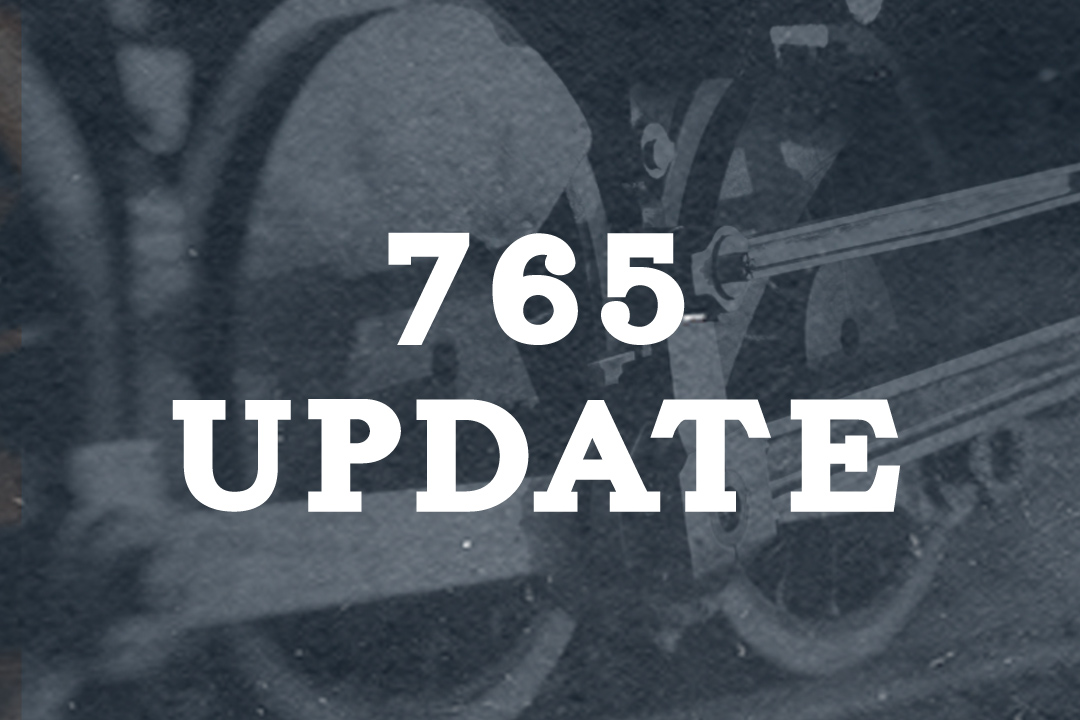Submitted by Steve Winicker.
LAST WEEKENDS SHOP ACTIVITY
Friday, I spent the day shopping and picking things up for various projects. We had a good crew working on insulation and got all but a small sliver of the boiler barrel covered with one layer of Mineral Wool. In some areas one more layer is needed.
Saturday, most of the day was spent building a paint booth. We were able to finish covering the boiler barrel with insulation other than the combustion chamber area.
Sunday, a small crew we worked on the top of the boiler and began mudding in some of the staybolt cap areas.
UPCOMING ACTIVITIES
The fun starts Wednesday next week and continues through the Easter weekend for those who can help. Bob is scheduled to be out Wednesday to start working on the Jacket which is scheduled to arrive Tuesday. I need to see how it goes but Bob was hoping to get done in a couple of weeks if we can get the insulation on.
SAFETY SENSE
Working on machines as we do, we have to loosen and tighten nuts, bolts, screws and the like as we’re setting up and making adjustments to the equipment. Some of us have a tendency to “put our all” into it as we tighten up those bolts.
There may be something satisfying about pulling a wrench as hard as you can until it won’t move another hair . . . however you aren’t doing the equipment any favors. In fact, most of the torque (bolt tightness) specifications would really surprise you.
Besides the obvious problem of the bolt being impossible to remove by the next guy, there are some more serious issues that arise when a bolt is over tightened. Over tightened bolts undergo more stress than it was designed to handle. This not only applies to the nut, bolt or screw, but also to the framework you’re bolting into. The extra stress can cause the bolt or stud to stretch and possibly initiate a crack in the thread root which can lead to a failure of the bolt or stud. Needless to say bolt or stud failure can compromise the safety of the machine and endanger lives.
It was recently necessary to replace the studs securing the steam dome on the 765 due to the studs being stretched from over tightening.
Injuries can occur during the process of over tightening. One can pull a muscle and the opportunity for the wrench to slip off the nut increases dramatically which can result in a severe hand injury or worse.
Remember the guy who has to loosen the fastener during the next operation. He may not be as strong as you are and can get injured trying to loosen it.
Nuts, bolts and screws need to be tight, but there is a difference between snug and back-breaking.
The proper approach would entail the following….
- Know the diameter and grade of the bolt or stud and consult a Standards Book to determine the proper torque to applied
- Utilize a torque wrench to tighten nuts and bolts especially those on critical applications such as the steam dome or cylinder head
Properly tightening fasteners not only prevents damage to the fastener, possibly jeopardizing the safe operation of the assembly, but it also helps prevent injury to the worker.


